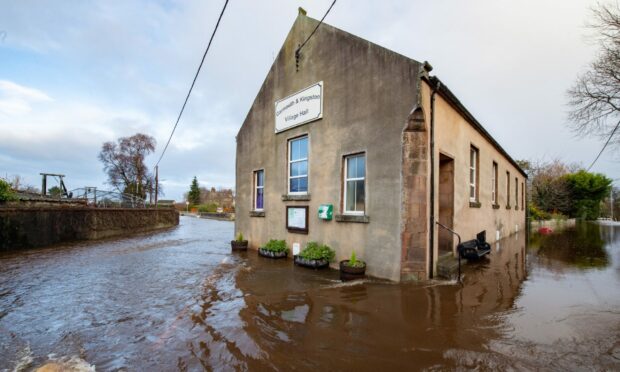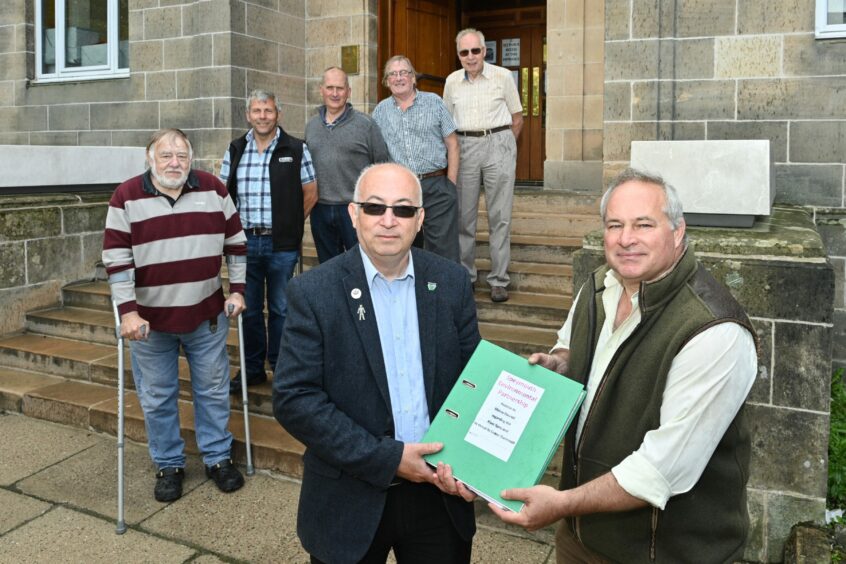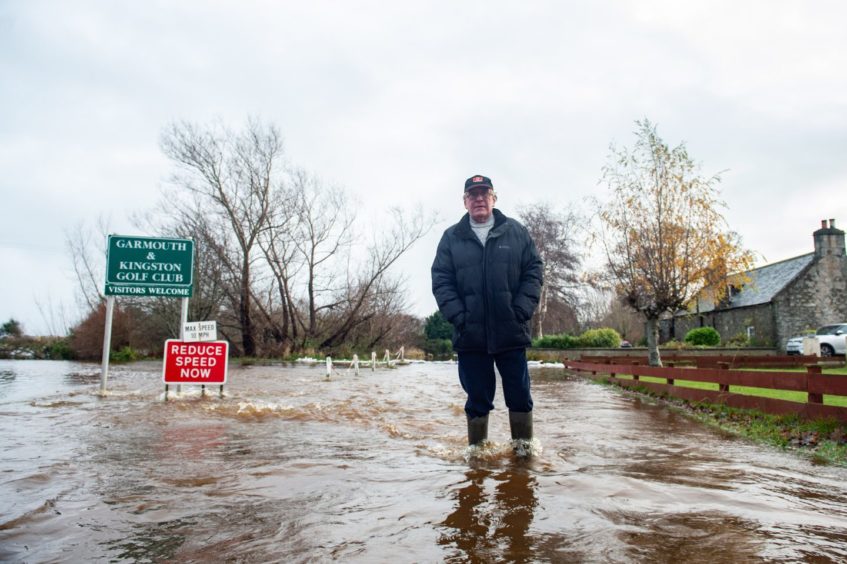Garmouth residents have criticised Moray Council over their lack of action as they live in fear of flooding for another winter.
Water pouring into the village from the River Spey has been a concern for many years.
However, problems escalated in March when it was revealed the community had been flooded 11 times within a year.
It is understood changes in the riverbank upstream from Garmouth led to the increase in flooding.
And now the community is demanding action from Moray Council to protect their homes.
However, the local authority says it has not included the village in its current flood action plans.
‘Houses totally exposed to the river’
Innes Community Council secretary Jim Mackie stressed flooding in Garmouth has been a problem for 20 years and the river levels have been high again in recent weeks.
He explained the river was being forced closed to the old railway embankment, which could leave the village “exposed” to the Spey if water makes its way through.
Mr Mackie feels Moray Council isn’t doing enough to tackle the problem and the plans they’ve been working on aren’t effective.
He said: “The council’s decision is to do nothing about it, officers put a plan to the council and the plans are not accepted by the community as being the long-term solution.
“Their plan was basically to block off the two underpasses in the walkway and bury trees on some of the land.
“That won’t stop the river eroding westwards and the community’s argument is that the river continues to erode westwards.
“If nothing is done, eventually the walkway to the viaduct over the Spey and once it’s through there are 10 to 15 houses in Garmouth that will be totally exposed to the river, as well as the golf course and the village hall, which serves as a nursery.
“The community are extremely worried, eventually the walkway is going to come out and lower Garmouth is going to be under it.”
Mr Mackie has also accused Moray Council of refusing to listen to alternative advice secured by the community by hydrologist Hamish Moir.
He added: “He’s an internationally renowned expert in riverbank management, he’s done a lot of work on the Spey in Scotland and the North Atlantic including in America.
“Nobody can understand why Moray Council officers are just hell-bent and not putting up plans.
“Some work was done in 2012 against the advice of some of the community and the day after they finished, the river was over the top.
“It’s been going more than 600 yards westwards since the year 2000 and it’s continuing at a rate of about one metre per month towards Garmouth and nobody will take responsibility for it.”
‘No intention of spending a single penny’
Garmouth resident David Mackay has had his home flooded repeatedly over the years, he agreed that the officers plan “wouldn’t work” and his own proposals have been ignored by the council.
He said: “I wrote a resilience plan for Garmouth and Kingston 12 years ago, they said it wasn’t practical, but it was based on the absolute experience of what people were going through.
“Nothing’s been done, Moray Council or the Scottish Government have no intention of spending a single penny on flood prevention and it will continue to be a threat.
“They don’t know what to do about it because they won’t talk to me, people on the board and retired gillies – there’s about 300 years worth of experience on the Spey.
“But we don’t have suitable letters after our names, therefore they think we obviously don’t know what we’re talking about.”
Coastal flood risk commitment
Moray Council has stressed it has explored options to resolve the flooding concerns in Garmouth, including those put forward by the community.
However, a spokeswoman explained there are no approved proposals for the village in flood risk management plans and it is policy to only pursue those.
She added: “However, on November 15, members of the economic development and infrastructure services committee approved the next cycle of flood risk management plans 2022-28, which includes a commitment to reduce the overall flood risk to the Spey Bay coastal area.
“This involves the continued monitoring of the coastal flood risk, maintaining flood warning systems, and assisting prepare resilient communities for any potential flooding events with awareness raising activities.”



Conversation